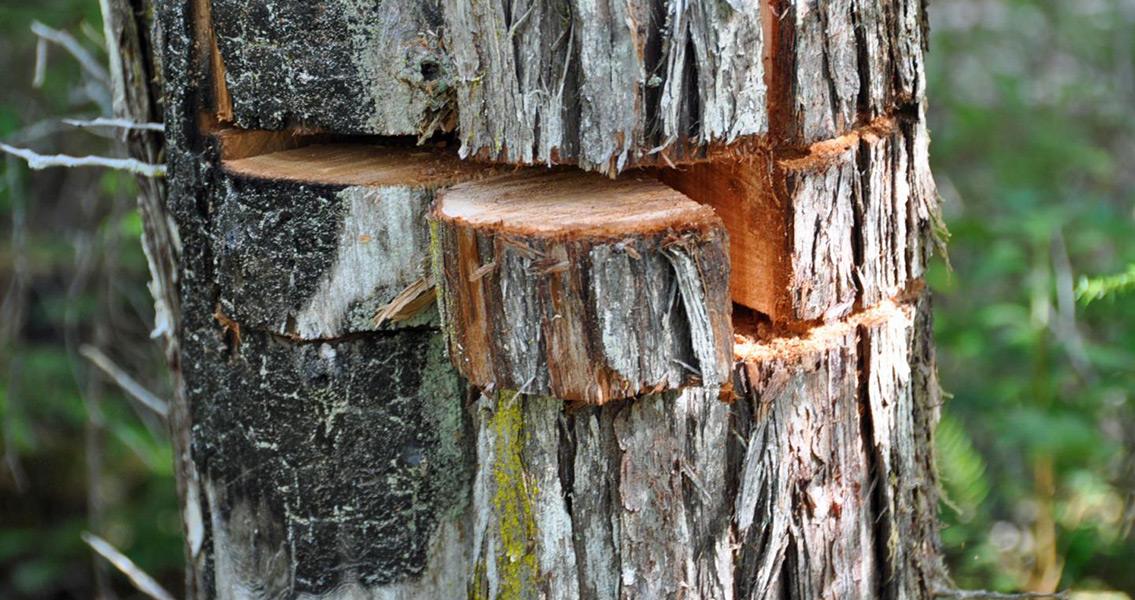<![CDATA[On a remote island located off the coast of British Columbia, new research has shown that indigenous populations likely had a profound effect on patterns of wildfires. By combining tree ring evidence with climate data, researchers from two Pacific Northwest universities were able to track a pattern of fires over five centuries that weaved together El Nino events and human activity. The new study adds to a growing body of evidence suggesting fires were more frequent in the Pacific Northwest prior to 1900, a pattern that can likely be explained by human factors. "Fire is historically important in the West," said Daniel G. Gavin, professor of Geography at the University of Oregon. "There is a lot of evidence from fire scars throughout the Pacific Northwest, not just in the dry pine forests, that point to more frequent fires having occurred before 1900." Gavin and his co-author, Kira M. Hoffman of the University of Victoria, focused on the isolated Hecate Island off British Columbia. Crucially, they found that the last forest fire on Hecate occurred in 1893, around the time the island was abandoned as the indigenous populations were relocated to permanent settlements on the North American mainland. Hecate experiences more than 4,000 millimeters of rain annually and has a short dry season, perhaps making it an unlikely location to perform a study on forest fires. The island is located in a northern region where both lightning and human caused fires are considered to be a rarity. On the other hand, the island has hardly been affected by twentieth century land use or modern fire suppression methods, making it ideal for determining the human factors behind pre-twentieth century fires. A former fire fighter, Hoffman chose the island after stumbling across a fire damaged tree there while working a project for her master's of science degree. "Finding this fire evidence was an accident and I was really surprised because there had been no evidence of fire on the central coast of British Columbia," she said in a press release. "The more I looked, the more I found. We know that the fires were smoldering ground fires because they didn't kill the trees that they scarred, and they didn't fully burn ground fuels." Drawing data from around 3,000 trees at 30 plots within a 300 hectare area that included three archaeological sites where indigenous populations had lived, the team, which also included Brian M. Starzomski; a professor in UVic's School of Environmental Studies, were able to correlate wild fire occurrences in respect to other fires, climate events and human activity. Over a 517-year period, from 1376 to 1893, 13 fire events occurring roughly every 39 years were documented. Significantly, these fires seemed to follow El Nino events by either six to nine, or thirteen to seventeen years. By incorporating tree ring records into their research, Gavin, Hoffman and Starzomski found that wild fires were 25 times more likely than previous estimates based on intervals of over a thousand years had suggested. Interestingly, the team found little connection between drought and fire years. "It seems that fire events don't have a pattern if you look only at weather in any given year," Hoffman explained. "When we pulled back and look at longer climate patterns, we began to see that fires were linked to prolonged periods of warm and dry conditions that build up over time." The team's findings are the first in the region to tie forest fires to human activity. Evidence for fires became scarcer farther away from the areas of the island that had been populated. This, alongside the sudden lack of fires after 1893, leads the team to suggest the indigenous populations had used fire as a means to manage resources. "It's possible they would have relied heavily on burning forests and single trees to create dry firewood for cooking and heating, clothing, canoes, food and many other resources," Hoffman said. Image courtesy of Kira Hoffman]]>
Indigenous Populations Had a Profound Effect on Forest Fires
